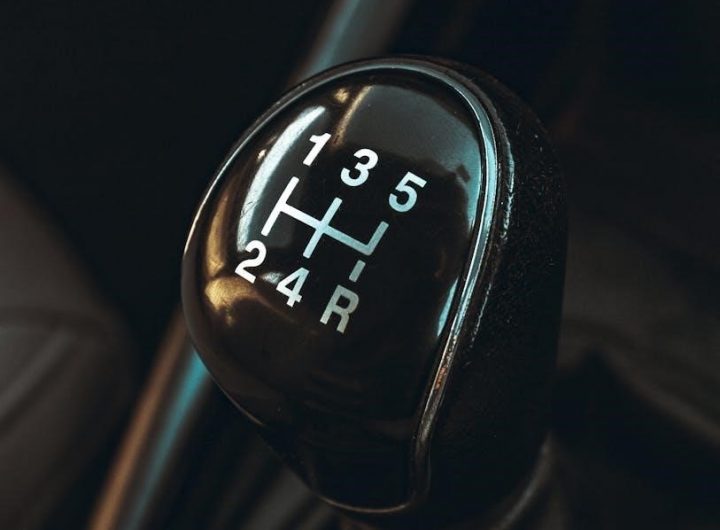
The Status 7 Day Digital Timer Switch is a versatile and user-friendly device designed for automating electrical appliances. It offers 10 on/off programs, 16 day combinations, and easy setup.
1.1 Overview of the Timer’s Purpose and Functionality
The Status 7 Day Digital Timer Switch is designed to automate the control of electrical appliances, offering a user-friendly solution for scheduling operations. Its primary purpose is to allow users to set specific on/off times for devices, optimizing energy usage and convenience. With a digital display, the timer provides clear visibility of current settings and status. It supports up to 10 different on/off programs and 16 combinations of days or blocks of days, making it highly flexible for various scheduling needs. The timer also features a manual override option, enabling temporary adjustments without altering programmed settings. This device is ideal for homeowners seeking to streamline appliance control while reducing energy waste.
1.2 Key Features of the Status 7 Day Digital Timer Switch
The Status 7 Day Digital Timer Switch offers a range of features to enhance convenience and efficiency. It supports 7-day programming, allowing users to create customized schedules for different days. The timer includes 10 different on/off programs and 16 combinations of days or blocks of days, providing flexibility for varied routines. It also features a random mode for added security and a manual override option for temporary adjustments. The timer is compatible with both 12-hour and 24-hour formats and includes a clear digital display for easy readability. Additional features such as Always pull the plug from the socket, never the cord. Ensure the plug is fully inserted into the timer outlet. Press the ON/OFF key to activate the device. Always pull the plug from the socket, never the cord, to avoid damage. Ensure the plug is fully inserted into the timer outlet to prevent electrical issues. Keep the timer away from water and moisture to avoid short circuits; Avoid overloading the timer with high-power appliances. Never use the timer near flammable materials or in hazardous environments. Ensure proper installation by a qualified electrician if required. Do not use the timer if it is damaged or malfunctioning. Always follow the manufacturer’s guidelines for safe operation. Failure to comply may result in electrical hazards or device damage. Keep out of reach of children and pets. Unpack the Status 7 Day Digital Timer Switch carefully, ensuring all components are included. Plug the timer into a power source and insert the appliance plug into the timer outlet. Ensure the plug is fully inserted to avoid electrical issues. Turn on the appliance and press the MODE button to activate the timer. Keep the timer away from water and moisture to prevent damage. Do not install near flammable materials or in hazardous environments. Ensure proper wiring and power supply before use. If unsure, consult a qualified electrician for assistance. Proper installation ensures safe and reliable operation of the timer. Set the clock by pressing the HOUR, MINUTE, and DAY buttons. Use standard time format and ensure the correct day is selected for accurate scheduling. The timer displays time in a 12/24-hour format and date as MM/DD/YYYY. The current hour, minute, and day are shown prominently, with the selected setting blinking during adjustments. Users can navigate through time and date options using the corresponding buttons, ensuring precise scheduling. This clear format helps in setting accurate on/off programs for specific days, making it easy to manage appliance automation efficiently. To set the current time, press the CLOCK button until the hour display blinks. Use the HOUR and MINUTE buttons to adjust the time. Press and hold to increase or decrease values. Once set, press SET to confirm. For AM/PM selection, press the CLOCK button again until the format is correct. Ensure the timer is in the correct 12- or 24-hour mode. The display will show the updated time, and the blinking will stop, indicating the time is saved. This ensures accurate scheduling for your programmed settings. Press the CLOCK button until the day of the week display blinks. Use the DAY button to cycle through the days (MON, TUE, etc.). Once the correct day is shown, press SET. Next, press the CLOCK button until the date display blinks. Use the HOUR and MINUTE buttons to adjust the month and day. Press SET to confirm. Ensure the date format matches your preference (MM/DD/YYYY). The timer will now accurately reflect the current date and day, ensuring proper program execution. This step is crucial for scheduling events correctly. The Status 7 Day Digital Timer allows creating up to 10 on/off programs with 16 day combinations; Use the PROG button to set schedules, combining WEEK, HOUR, and MINUTE buttons for precise timing. Select 12- or 24-hour mode with the CLOCK button. Programs can be tailored for specific days or blocks of days, providing flexibility for different routines. This feature ensures your appliances operate automatically according to your predefined schedule, making it ideal for home automation and energy management. The timer’s programming capabilities offer convenience and customization for various electrical devices. To create a program, press the PROG button and select the desired day(s) using the WEEK button. Set the ON and OFF times by pressing HOUR and MINUTE. Use the ON/AUTO/OFF button to confirm. For editing, navigate to the program, adjust settings, and save. The timer allows up to 10 programs with 16 day combinations, enabling flexibility for different routines. Programs can be combined for multiple days, ensuring seamless automation. This feature simplifies scheduling and minimizes manual intervention, making it ideal for managing various electrical devices efficiently. The intuitive interface ensures easy customization to meet specific needs. To set an ON/OFF program for specific days, press the PROG button and use the WEEK button to select the desired day(s). Choose the ON time by pressing HOUR and MINUTE, then confirm with the ON/AUTO/OFF button. Repeat for the OFF time. The timer allows setting programs for individual days or multiple days, such as Monday and Thursday. Once set, press ON/AUTO/OFF to save. This feature enables customized scheduling, ensuring devices operate only when needed. You can create up to 10 programs for different days, enhancing flexibility and convenience. To combine multiple programs for different days, press the PROG button and select the desired days using the WEEK button. Set the ON and OFF times for each program by pressing HOUR and MINUTE. Once set, press ON/AUTO/OFF to save. You can create up to 10 programs and combine them for different days, such as Monday, Wednesday, and Friday. This feature allows for tailored scheduling, ensuring devices operate according to your specific needs. The timer will execute each program independently, providing flexibility and convenience for managing multiple routines. This ensures seamless automation across varying days and schedules. After setting your programs, press the ON/AUTO/OFF button to save them. The timer will confirm the save with a brief flash of the display. To review settings, press the PROG button and cycle through programs using the HOUR or MINUTE buttons. The display will show the saved times for each day. Ensure all settings are correct before enabling AUTO mode. Regularly reviewing programs helps maintain accurate scheduling and prevents errors. Saved programs remain active until manually changed or reset, providing consistent automation for your appliances. Always verify settings after updates to ensure proper functionality. This ensures reliable performance and desired automation outcomes. Press the MANUAL button to override scheduled programs temporarily. The red LED indicates manual mode. Temporary settings revert to auto mode after the current cycle completes. Press the MANUAL button to switch between auto and manual modes. In manual mode, the red LED illuminates, allowing you to turn the appliance on or off temporarily. This feature is useful for quick adjustments without altering programmed settings. The timer will revert to its scheduled program after the current manual cycle completes. Ensure the appliance is in the correct state before switching modes. Always unplug safely and avoid pulling the cord to prevent damage. This feature provides flexibility while maintaining programmed schedules for seamless operation. It is ideal for temporary overrides without losing your saved settings. To switch between Auto and Manual modes, press the MANUAL button. In Auto mode, the timer follows programmed schedules, while Manual mode allows temporary on/off control. The red LED indicates Manual mode. To revert, press the same button or wait for the current cycle to end. This feature ensures flexibility without disrupting programmed settings. Always ensure the appliance is in the correct state before switching modes. Manual mode is ideal for temporary adjustments, while Auto mode resumes automated control based on saved programs. This seamless transition enhances user convenience and maintains operational efficiency. Use this feature for quick overrides without losing your settings. The digital display shows the current time, date, and active programs. LED indicators signal power status, while the display format includes hours, minutes, and day abbreviations for clarity and ease of use. The Status 7 Day Digital Timer Switch features LED indicators to provide real-time feedback. A red LED illuminates when the device is powered on or in program mode. Additional LEDs may indicate active programs, manual override, or error states. Understanding these indicators helps users verify the timer’s operational status at a glance. For example, a blinking LED might signal an active program, while a steady light confirms power. Refer to the display for further details, ensuring smooth operation and troubleshooting. These visual cues enhance user experience by simplifying status monitoring without needing to access the menu. The digital display clearly shows the current time and date in a standard format (HH:MM, MM/DD/YYYY). When a program is active, the display may show symbols or indicators, such as a small clock icon or “ON,” to confirm the timer is running. Users can quickly verify if their programmed settings are operational. The display also updates in real-time, reflecting manual overrides or temporary adjustments. Pressing the MODE button cycles through available views, including program status and active schedules, ensuring easy monitoring and control of all timer functions. This feature enhances user confidence in the timer’s operation. Press and hold the CLOCK button, then press and hold the ON/AUTO/OFF button to toggle between standard and daylight saving time modes. The display will confirm the change. To adjust the timer for daylight saving time, press and hold the CLOCK button until the display shows STD or DST. Use the ON/AUTO/OFF button to toggle between modes. The display will confirm the change. This feature ensures seamless transitions during seasonal time changes without manual time adjustments. The timer automatically updates, maintaining accurate scheduling for your appliances. Always verify the display after switching to confirm the correct mode. This process ensures uninterrupted functionality and precise automation throughout the year. Follow these steps to keep your timer synchronized with seasonal time changes effortlessly. Synchronizing the Status 7 Day Digital Timer Switch with seasonal time changes is straightforward. After adjusting for daylight saving time, press and hold the CLOCK button until STD or DST appears on the display. Use the ON/AUTO/OFF button to confirm the selection. The timer automatically updates its internal clock to match the new time setting, ensuring all programmed schedules remain accurate. This synchronization process prevents disruptions to your automated routines and guarantees reliable operation year-round. Always verify the display to confirm the correct mode. The timer’s digital display will reflect the updated time, maintaining seamless functionality for all connected appliances. Ensure the timer is installed by a qualified electrician. Connect the live wire to terminal 1 and the load to terminal 2. Secure all connections tightly and test the circuit before use. Always follow safety guidelines to avoid electrical hazards. Proper wiring ensures optimal performance and safety of the Status 7 Day Digital Timer Switch. Refer to the manual for detailed diagrams and specific instructions. Turn off the power supply before starting the installation process. Double-check all connections to prevent short circuits or malfunctions. To connect the Status 7 Day Digital Timer Switch to electrical appliances, plug the timer into a power source and insert the appliance’s plug into the timer’s outlet. Ensure the appliance is turned on before plugging it in to avoid activation issues. Always insert the plug fully into the timer outlet to maintain a secure connection. For safety, unplug the timer before cleaning or servicing. Avoid overloading the timer with high-power appliances. Keep the timer away from water and moisture to prevent damage. Follow the manufacturer’s guidelines for compatible appliances and power ratings. Proper connection ensures reliable operation and safety. Always test the setup after installation. Ensure the Status 7 Day Digital Timer Switch is correctly wired to a grounded power outlet. Use the appropriate voltage as specified in the manual to avoid damage. Plug the timer into a reliable power source and avoid overloading it with high-power appliances. Check the power supply cord for damage before use. Secure all connections firmly to prevent loose wiring. If unsure, consult a licensed electrician. Always unplug the timer before performing maintenance. Ensure the appliance plugged into the timer is compatible with its power rating. Proper wiring ensures safe and efficient operation of the timer and connected devices. Follow all safety guidelines to prevent electrical hazards. Common malfunctions include incorrect time display or unresponsive buttons. Check power supply, ensure proper wiring, and reset the timer if necessary. Refer to manual for detailed solutions. Common issues include power failures, incorrect time display, or unresponsive buttons. To diagnose, ensure the timer is properly plugged in and the outlet is functioning. If the display is dim or unlit, check the battery or power supply. For unresponsive buttons, restart the timer by unplugging and replugging it. If programs fail to execute, verify settings and ensure they are saved correctly. LED indicators can help identify active modes or errors. For persistent issues, reset the timer to factory settings or consult the user manual for detailed troubleshooting steps. Regular maintenance, like cleaning, can prevent malfunctions. To reset the Status 7 Day Digital Timer Switch to factory settings, locate the small reset button on the back or bottom of the device. Use a paper clip or pin to press and hold the reset button for 5-10 seconds until the LED flashes. Release the button and wait for the timer to reboot. All programmed settings will be erased, returning the timer to its default state. After resetting, the timer will display the initial setup screen, allowing you to reconfigure programs and settings as needed. This process resolves most software-related issues and restores optimal functionality. Regularly clean the timer with a soft cloth and avoid harsh chemicals. Replace the battery when low to maintain functionality. Store the timer in a dry, cool place to preserve its performance and ensure longevity. Regular cleaning ensures optimal performance and longevity. Use a soft, dry cloth to wipe the timer’s surface, avoiding harsh chemicals or abrasive materials. For stubborn marks, lightly dampen the cloth but ensure no moisture seeps inside. Always unplug the timer before cleaning. Protect the digital display by avoiding direct sunlight or extreme temperatures. Store the timer in a dry, cool place when not in use to prevent damage; Proper care extends the timer’s lifespan and maintains its functionality. To maintain functionality, replace the timer’s battery when it drains. Ensure the timer is unplugged before starting. Open the battery compartment, usually located on the back, using a screwdriver. Carefully remove the old battery and insert a new CR2032 lithium battery, ensuring the positive side faces up. Avoid using low-quality batteries to prevent performance issues. After replacing, close the compartment securely. Plug the timer back in and test its operation. Battery replacement ensures continuous operation and prevents data loss. Check the battery during Daylight Saving Time changes to maintain accuracy. Customers praise the timer’s ease of use and value for money. Many find it reliable for automating lights, though some note mixed build quality and noise levels. Customers have shared mixed yet largely positive feedback about the Status 7 Day Digital Timer Switch. Many users appreciate its ease of use and reliability for automating lights and appliances. The timer’s ability to handle multiple programs and day combinations is often highlighted as a key strength. Some users praise its value for money, noting it works well for basic automation needs. However, a few customers mention that the build quality could be improved, and some find the noise from the relay slightly annoying. Overall, it remains a popular choice for home automation due to its simplicity and effectiveness. Users frequently commend the Status 7 Day Digital Timer Switch for its simplicity and effectiveness in automating home appliances. Many highlight its ease of use, with intuitive programming that simplifies scheduling tasks. The ability to set multiple on/off programs and day combinations is particularly praised for its flexibility. However, some users criticize the timer’s build quality, noting it feels somewhat flimsy. Additionally, the audible noise from the relay when switching has drawn complaints; Despite these criticisms, the timer remains a cost-effective solution for basic automation needs, balancing functionality with affordability for many satisfied customers. How do I set the clock? Press the CLOCK button and adjust using HOUR and MINUTE buttons. Refer to the time setting section for detailed instructions. Can I create multiple programs? Yes, you can set up to 10 on/off programs with 16 day combinations for flexible scheduling. How does manual override work? Press the MANUAL button to switch between auto and manual modes, overriding scheduled programs temporarily. What if the timer loses power? The timer retains programs but requires re-setting the current time and date after power restoration. How do I set the clock? Press the CLOCK button and adjust using the HOUR and MINUTE buttons. Ensure the correct day is selected for accurate scheduling. Can I create multiple programs? Yes, you can set up to 10 on/off programs with 16 day combinations, allowing flexible automation for different days or blocks of days. How does manual override work? Press the MANUAL button to switch between auto and manual modes, enabling temporary control over your appliances. What if the timer loses power? The timer retains programmed settings but requires resetting the current time and date after power is restored. How do I switch between standard and daylight saving time? Press and hold the CLOCK and ON/AUTO/OFF buttons simultaneously to toggle between time modes. Can I clean the timer? Yes, unplug it first, then wipe with a soft cloth to avoid damage to the digital display or controls. What if the timer doesn’t turn on appliances? Check wiring connections and ensure the appliance is properly plugged into the timer outlet. Verify the program settings and power supply. How to reset the timer to factory settings? Unplug the timer, press and hold the MANUAL button, then plug it back in while still holding the button. Release after 5 seconds. Why does the timer show the wrong time? Ensure the clock is set correctly, including the day. If using daylight saving, check the DST setting is enabled or disabled as needed. Can the timer control multiple appliances? Yes, but each appliance must be connected through separate timers or a single timer with a shared load, ensuring the total power does not exceed the timer’s rating. Why are programs not executing? Ensure AUTO mode is active and programs are saved correctly. Check for any manual override activation or conflicting program settings. The Status 7 Day Digital Timer Switch offers versatility and convenience for automating appliances. With programmable features and user-friendly controls, it enhances energy efficiency and simplifies daily routines. The Status 7 Day Digital Timer Switch offers a range of features, including 10 on/off programs, 16 day combinations, and a manual override option. It simplifies setup with an easy-to-read display and straightforward controls. The timer supports automatic switching between standard and daylight saving time, ensuring accuracy year-round. Its programmable design allows for energy efficiency and convenience, enabling users to automate their appliances effortlessly. The device is user-friendly, making it ideal for home automation. Its durability and reliability provide long-term benefits, ensuring consistent performance and ease of use for various electrical applications. For optimal use of the Status 7 Day Digital Timer Switch, ensure regular maintenance by cleaning the device and keeping it dry; Always unplug it before cleaning to avoid damage. Periodically review and update your programs to match your lifestyle changes. Check that all plugs are fully inserted into the timer outlet for reliable operation. Store the timer in a cool, dry place when not in use. By following these tips, you can extend the timer’s lifespan and ensure consistent, trouble-free performance for your automated appliances.Safety Precautions and Initial Setup
2.1 Important Safety Instructions Before Use
2.2 Unpacking and Physical Installation of the Timer

Setting the Clock and Date
3.1 Understanding the Time and Date Display Format
3.2 Step-by-Step Instructions for Setting the Current Time
3.3 Adjusting the Date and Day of the Week

Programming the Timer
4.1 Creating and Editing Timer Programs
4;2 Setting ON/OFF Programs for Specific Days
4.3 Combining Multiple Programs for Different Days
4.4 Saving and Reviewing Program Settings

Manual Override and Temporary Settings
5.1 Using the Manual Override Feature
5.2 Switching Between Auto and Manual Modes

Understanding the Digital Display
6.1 Interpreting the Timer’s LED Indicators
6.2 Reading the Current Time and Program Status

Switching Between Standard and Daylight Saving Time
7.1 Adjusting the Timer for Daylight Saving Time
7.2 Synchronizing the Timer with Seasonal Time Changes

Installation and Wiring Instructions
8.1 Connecting the Timer to Electrical Appliances
8.2 Ensuring Proper Wiring and Power Supply

Troubleshooting Common Issues
9;1 Diagnosing and Resolving Timer Malfunctions
9.2 Resetting the Timer to Factory Settings
Maintenance and Care Tips
10.1 Cleaning and Protecting the Timer
10.2 Replacing or Updating the Timer’s Battery

User Reviews and Feedback
11.1 Customer Experiences with the Status 7 Day Timer
11.2 Common Praise and Criticisms from Users

Frequently Asked Questions (FAQs)
12.1 Answers to Common Questions About the Timer
12.2 Solving Specific User Queries
13.1 Summary of Key Features and Benefits
13.2 Final Tips for Optimal Use of the Timer
 macbeth key quotes gcse pdf
macbeth key quotes gcse pdf  macbeth key quotes gcse pdf
macbeth key quotes gcse pdf  racesafe body protector size guide
racesafe body protector size guide  bosch washing machine user manual pdf
bosch washing machine user manual pdf  gray’s manual of botany
gray’s manual of botany  waterdrop x series undersink reverse osmosis system x16 manual
waterdrop x series undersink reverse osmosis system x16 manual  kia service manual pdf free download
kia service manual pdf free download